
How to create customer personas

How well do you know your customers? If you’re like most of us, probably not as well as you should. One of the biggest mistakes marketers, product teams, and designers make is not developing a deep enough understanding of their customer’s needs and so making a lot of assumptions about how to solve for them. That’s why creating customer personas is so important.
What is a customer persona?
A customer persona (also known as a buyer persona) is a semi-fictional archetype that represents the key traits of a large segment of your audience, based on the data you’ve collected from user research and web analytics. It gives you insight into what your prospective customers are thinking and doing as they weigh potential options that address the problem they want to solve. Adele Revella, founder of Buyer Persona Institute, describes it like this:
Actionable buyer personas reveal insights about your buyers’ decisions—the specific attitudes, concerns and criteria that drive prospective customers to choose you, your competitor or the status quo.
Marketing insights
Discover how UserTesting helps marketers refine messaging, optimize campaigns, and drive stronger customer connections.
A well-crafted customer persona goes beyond basic demographics—it captures the motivations, behaviors, and pain points that influence decision-making. By understanding your customers’ goals, challenges, and buying triggers, you can create more targeted messaging, refine your product offerings, and develop marketing strategies that resonate on a deeper level. Effective personas help align teams across marketing, sales, and product development, ensuring every interaction feels personalized and relevant. When you truly understand your audience, you can craft experiences that not only attract but also convert and retain loyal customers.
Why are customer personas important?
Customer personas can provide tremendous value and insight to your organization. For example, they can help everyone on your team:
- Develop a deeper understanding of customer needs and how to solve for them
- Guide product development by creating features that help them achieve their desired outcomes
- Prioritize which projects, campaigns, and initiatives to invest time and resources in
- Create alignment across the organization and rally other teams around a customer-centric vision
And as a result, you’ll be better equipped to serve your customers and deliver a superior experience that keeps them coming back for more. But if you don’t nail down your customer personas, every aspect of your product development process, user experience, and marketing campaigns, will suffer. A lot has been written about how to create a customer persona. But wading through all the noise to find the best resources takes a long time. Here are the five best resources to help you create effective customer personas.
How to create a customer persona in 4 steps
Step 1: Get to know your target customer
The first step is developing a real, deep understanding of who your target customer is - and I mean go full private investigator mode. Use every qualitative and quantitative research method in the book to peek into their lives.
While you should definitely start with surveys and user interviews, don't stop there. You can dig further into your customer's digital footprints through solutions, like UserTesting, that let you get additional user feedback. You can also comb through social media, listen in on those customer support calls, and make a habit of visiting those online forums relevant to your industry.
This multi-pronged approach doesn't just give you direct insights into what they like and how they behave but also the why behind their actions. Once you've gathered all this juicy data, look for patterns and group your audience into distinct buckets or tribes - this will form the foundation for your customer personas.
After your user research, you'll have qualitative data to enhance your understanding of your target customer. Then, you'll synthesize the data to discover similarities and patterns between your test participants.
Step 2: Understand your persona's demographics
Now that you've got your main personas outlined, it's time to beef up their demographic stats. But we're not just talking basic age/location/gender here.
During your user research, begin by asking questions to learn the demographics of your target customer. Here are some examples of questions you should be asking:
- How old is the customer?
- Where do they live?
- What's their gender?
- What industry do they work in?
- What's their highest level of education?
- What's their profession?
By asking these questions, you learn more about your target customer and can create your ideal customer persona.
You can also use quantitative data to create user personas with Google Analytics.
For example, demographic data can clue you in to which platforms your customers hang out on most or how they prefer to consume content. With these richer demographic insights connected to real-world actions, your personas will be packing some serious actionable intel.
Step 3: Uncover customer needs and frustrations
Figuring out the "why" behind your customer's behaviors is where the magic happens.
Use a blend of direct questioning through interviews/surveys and inferential analysis to really get inside their heads. Leverage tools like sentiment analysis and emotional intelligence assessments to complement direct customer feedback.
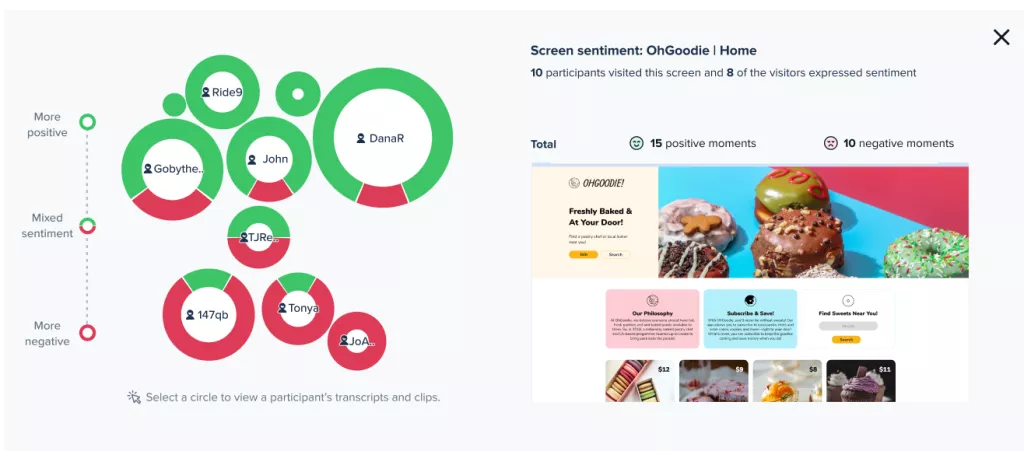
This multi-angled approach lets you build an intimate 3D understanding of what motivates and inspires your customers...but also what keeps them up at night. Nailing this step is crucial for aligning your products and marketing in a way that truly resonates with your audience's needs and values.
Step 4: Bring your customer persona to life
To build your customer persona, channel your inner storyteller to construct a vibrant narrative that makes your persona feel like a living, breathing human. Give them a name, a face (through stock photos, illustrations, or even use AI to generate unique faces), and a whole backstory covering their daily life, how they interact with your product category, the kind of messaging that clicks for them - the whole nine yards.
Sprinkle in direct quotes from your research or hypothetical thoughts representing their viewpoint. This level of specific, authentic detail makes your persona much more relatable and easier for your whole team to empathize with.
Pro-tips:
- Keep it fresh: Don't let your personas go stale! Set up a process to regularly revisit and update them as new data rolls in, markets shift, or your offerings evolve. Keeping them relevant is key.
- Make them cross-functional rock stars: Don't hog your personas for just the marketing team. Share them across the entire organization - product dev, sales, customer service, even HR. Understanding your customer should be baked into every aspect of your business.
Follow these steps and you'll have customer personas that don't just feel like real people. Having this level of intimate customer knowledge gives you a huge leg up in creating products and marketing that truly click.
How to find users to create a customer persona
To design a persona, find people that align with your target customer. Here are a few ways to find some interviewees.
1. Use your current customers
There's no better place to start than by asking customers who actively use your product. You have a higher chance of finding people who match your target persona when you conduct research with your actual customers.
Make sure to use customers who value your product, as well as those who aren't fond of your product. Although it's tempting only to use customers who love your product, you want a well-rounded and accurate representation of your customers' concerns and dislikes. Even the customers who don't like your product can provide useful information to help you develop your persona.
2. Use prospective customers
You should consider prospective customers in addition to customers you already have. They're a great option because you usually have their contact information. Use any data you collected about prospective customers to determine who matches your target persona.
3. Let UserTesting help recruit your users

With our UserTesting Human Insight Platform, you can run remote user interviews with our Participant Network, where you can find test participants to deliver diverse and balanced insights. No matter how specific your target audience is, our global participant network will fit your demographic needs and is consistently maintained by quality assurance methods.
You can get immediate access to real users worldwide and refine the users to pinpoint your target persona. If you’re not yet a UserTesting customer, you can always schedule calls with your panel of customers or users and hold user interviews over Zoom. With Live Conversation, 1-on-1 interviews can be scheduled with participants as soon as that day.
1. The complete beginner’s guide to marketing personas
If you’ve never created a customer persona before, or if you need a quick refresher, we recommend starting with this guide from Buffer. You’ll get a high-level understanding of what customer personas are, why they’re important, and how to create them. While it doesn’t go into as much depth as some of the other resources below, it’s a great place to start learning.
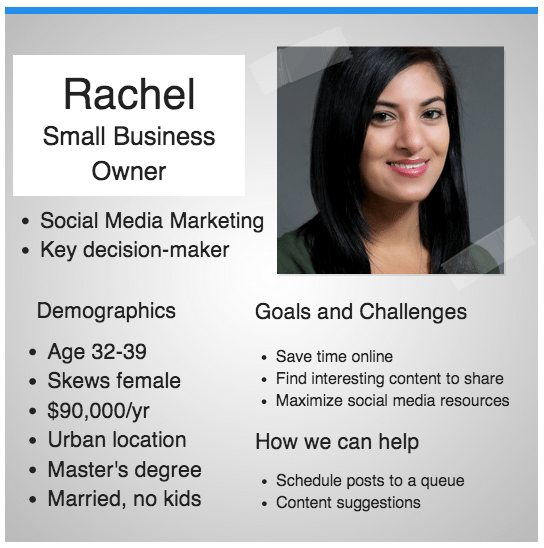
Via Buffer
2. How to create customer personas with actual, real-life data
This guide from ConversionXL makes the case that, to be effective, personas need to be based on data-driven research, rather than opinions and assumptions. This section from the book sums it up well:
Patching together actionable information about your customers with gut feelings, good intentions and some duct tape is not a recipe for conversion success… The problem with many personas is that they are either based on irrelevant data, poorly sourced data, or no data at all.
You’ll learn three ways to collect qualitative user feedback, and how to combine those insights with your web analytics data to get the complete picture of your customer’s behavior. You’ll learn that you need to use multiple sources of data to understand the motivations, attitudes, behaviors, and desired outcomes of your customers.

Via Mailchimp
3. How to create detailed buyer personas for your business
This resource from HubSpot gives you a step-by-step guide on how to conduct in-person customer interviews for your persona research. It goes into specific detail on how to set up your interviews, tips for recruiting interviewees, and exact questions you can ask during your interviews.
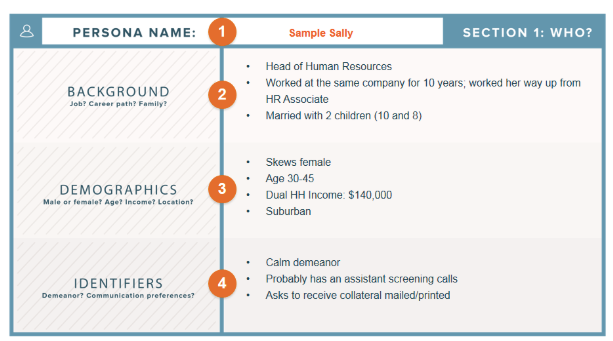
Via Hubspot
4. Personas: The art and science of understanding the person behind the visit
Although the introduction of this guide from Moz initially makes it sound like it’s only for marketers, it’s equally applicable to any UX designer or product team that wants to create a persona. This guide gets really specific about how to collect:
- Qualitative feedback - using customer interviews, focus groups, and ethnographic research
- Quantitative research - using your web analytics, market segmentation tools, multiple choice surveys, and other internal data
It also explains the difference between segments, cohorts, and personas, and gives specific use cases for how you can implement personas into your organization.
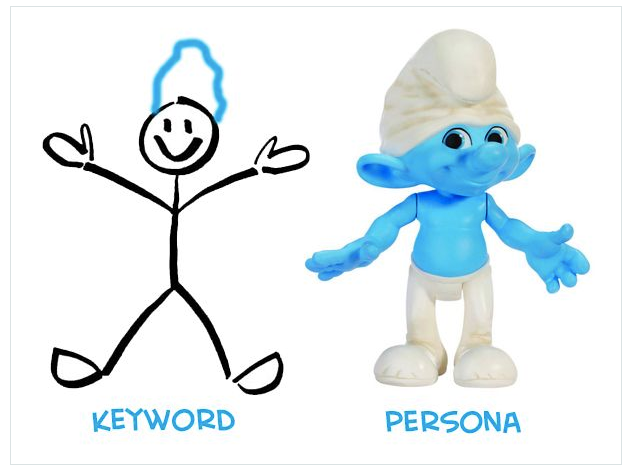
Via Moz
5. Quick and dirty guide to creating actionable content marketing personas
This guide from the Content Marketing Institute shares essential steps to create and apply content marketing personas that get results you can put into action. Although it was originally written for content marketers, the underlying principles apply to designers, product managers, and other marketers too.
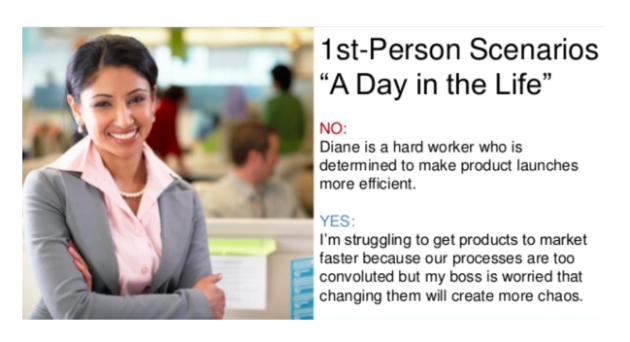
Via Content Marketing Institute
Bonus resources
If you’d like to learn more about how to create customer personas, see customer persona examples, and how to use them to enhance your entire customer journey, check out these resources:
Customer persona templates
- 20 Questions to Ask When Creating Buyer Personas [Free Template]
- The Persona Templates Used by Over 130,000 Businesses
- 15 must-see user persona templates
Other bonus resources
- 14 Ways to Get More Use Out of Your Buyer Personas
- 8 Rookie Mistakes You Might Be Making With Buyer Personas
- The Awesome Buyer Persona Word Doc Generator
- How Moz Builds Buyer Personas
- How to create personas using Google Analytics
- A Closer Look At Personas: What They Are And How They Work (Part 1)
- A Closer Look At Personas: What They Are And How They Work (Part 2)
- Target Audience Personas: The Benefits of Persona Development
Leveraging personas to create better experiences
Whether you’re a product manager, UX designer, or marketer, customer personas can help you develop a deeper understanding of:
- Your customer’s needs
- How to solve for them
- Which features, campaigns, and initiatives to prioritize
Just remember that your personas are only as good as the data-driven research that goes into them. They should be based on a combination of qualitative and quantitative data collected from multiple sources—not from the opinions and assumptions of your team.

Watch a demo
See how easy it is to get fast feedback on a website, prototype, design, or more in this demo.





